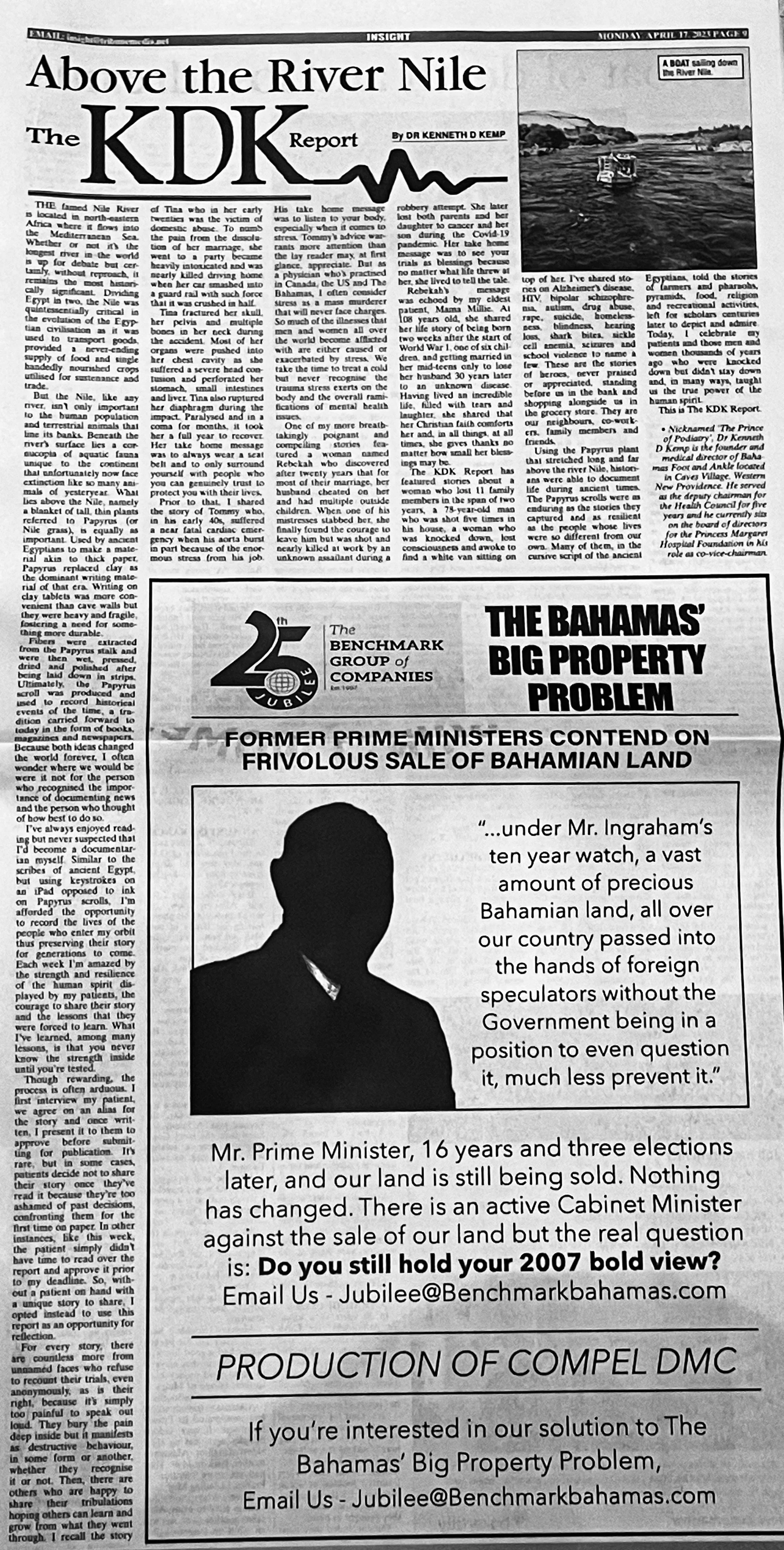Vol 72: Above the river Nile
The famed Nile River is located in northeastern Africa where it flows into the Mediterranean Sea. Whether or not it’s the longest river in the world is up for debate but certainly, without reproach, it remains the most historically significant. Dividing Egypt in two, the Nile was quintessentially critical in the evolution of the Egyptian civilization as it was used to transport goods, provided a never-ending supply of food and single handedly nourished crops utilized for sustenance and trade.
But the Nile, like any river, isn’t only important to the human population and terrestrial animals that line its banks. Beneath the river’s surface lies a cornucopia of aquatic fauna unique to the continent that unfortunately now face extinction like so many animals of yesteryear. What lies above the Nile, namely a blanket of tall, thin plants referred to Papyrus (or Nile grass), is equally as important. Used by ancient Egyptians to make a material akin to thick paper, Papyrus replaced clay as the dominant writing material of that era. Writing on clay tablets was more convenient than cave walls but they were heavy and fragile, fostering a need for something more durable.
Fibers were extracted from the Papyrus stalk and were then wet, pressed, dried and polished after being laid down in strips. Ultimately, the Papyrus scroll was produced and used to record historical events of the time, a tradition carried forward to today in the form of books, magazines and newspapers. Because both ideas changed the world forever, I often wonder where we would be were it not for the person who recognized the importance of documenting news and the person who thought of how best to do so.
I’ve always enjoyed reading but never suspected that I’d become a documentarian myself. Similar to the scribes of ancient Egypt, but using keystrokes on an Ipad opposed to ink on Papyrus scrolls, I’m afforded the opportunity to record the lives of the people who enter my orbit thus preserving their story for generations to come. Each week I’m amazed by the strength and resilience of the human spirit displayed by my patients, the courage to share their story and the lessons that they were forced to learn. What I’ve learned, among many lessons, is that you never know the strength inside until you’re tested.
Though rewarding, the process is often arduous. I first interview my patient, we agree on an alias for the story and once written, I present it to them to approve before submitting for publication. It’s rare, but in some cases, patients decide not to share their story once they’ve read it because they’re too ashamed of past decisions, confronting them for the first time on paper. In other instances, like this week, the patient simply didn’t have time to read over the report and approve it prior to my deadline. So, without a patient on hand with a unique story to share, I opted instead to use this report as an opportunity for reflection.
For every story, there are countless more from unnamed faces who refuse to recount their trials, even anonymously, as is their right, because it’s simply too painful to speak out loud. They bury the pain deep inside but it manifests as destructive behavior, in some form or another, whether they recognize it or not. Then, there are others who are happy to share their tribulations hoping others can learn and grow from what they went through. I recall the story of Tina who in her early twenties was the victim of domestic abuse. To numb the pain from the dissolution of her marriage, she went to a party became heavily intoxicated and was nearly killed driving home when her car smashed into a guard rail with such force that it was crushed in half.
Tina fractured her skull, her pelvis and multiple bones in her neck during the accident. Most of her organs were pushed into her chest cavity as she suffered a severe head contusion and perforated her stomach, small intestines and liver. Tina also ruptured her diaphragm during the impact. Paralyzed and in a coma for months, it took her a full year to recover. Her take home message was to always wear a seat belt and to only surround yourself with people who you can genuinely trust to protect you with their lives.
Prior to that, I shared the story of Tommy who, in his early 40’s, suffered a near fatal cardiac emergency when his aorta burst in part because of the enormous stress from his job. His take home message was to listen to your body, especially when it comes to stress. Tommy’s advice warrants more attention than the lay reader may, at first glance, appreciate. As a physician who’s practiced in Canada, the US and The Bahamas, I often consider stress as a mass murderer that will never face charges. So much of the illnesses that men and women all over the world become afflicted with are either caused or exacerbated by stress. We take the time to treat a cold but never recognize the trauma stress exerts on the body and the overall ramifications of mental health issues.
One of my more breathtakingly poignant and compelling stories featured a woman named Rebekah who discovered after twenty years that for most of their marriage, her husband cheated on her and had multiple outside children. When one of his mistresses stabbed her, she finally found the courage to leave him but was shot and nearly killed at work by an unknown assailant during a robbery attempt. She later lost both parents and her daughter to cancer and her son during the Covid-19 pandemic. Her take home message was to see your trials as blessings because no matter what life threw at her, she lived to tell the tale.
Rebekah’s message was echoed by my eldest patient, Mama Millie. At 108 years old, she shared her life story of being born two weeks after the start of World War 1, one of six children, and getting married in her mid-teens only to lose her husband 30 years later to an unknown disease. Having lived an incredible life, filled with tears and laughter, she shared that her Christian faith comforts her and, in all things, at all times, she gives thanks no matter how small her blessings may be.
The KDK Report has featured stories about a woman who lost 11 family members in the span of two years, a 78-year-old man who was shot five times in his house, a woman who was knocked down, lost consciousness and awoke to find a white van sitting on top of her. I’ve shared stories on Alzheimer’s disease, HIV, bipolar schizophrenia, autism, drug abuse, rape, suicide, homelessness, blindness, hearing loss, shark bites, sickle cell anemia, seizures and school violence to name a few. These are the stories of heroes, never praised or appreciated, standing before us in the bank and shopping alongside us in the grocery store. They are our neighbors, co-workers, family members and friends.
Using the Papyrus plant that stretched long and far above the river Nile, historians were able to document life during ancient times. The Papyrus scrolls were as enduring as the stories they captured and as resilient as the people whose lives were so different from our own. Many of them, in the cursive script of the ancient Egyptians, told the stories of farmers and pharaohs, pyramids, food, religion and recreational activities, left for scholars centuries later to depict and admire. Today, I celebrate my patients and those men and women thousands of years ago who were knocked down but didn’t stay down and, in many ways, taught us the true power of the human spirit.
This is The KDK Report.





